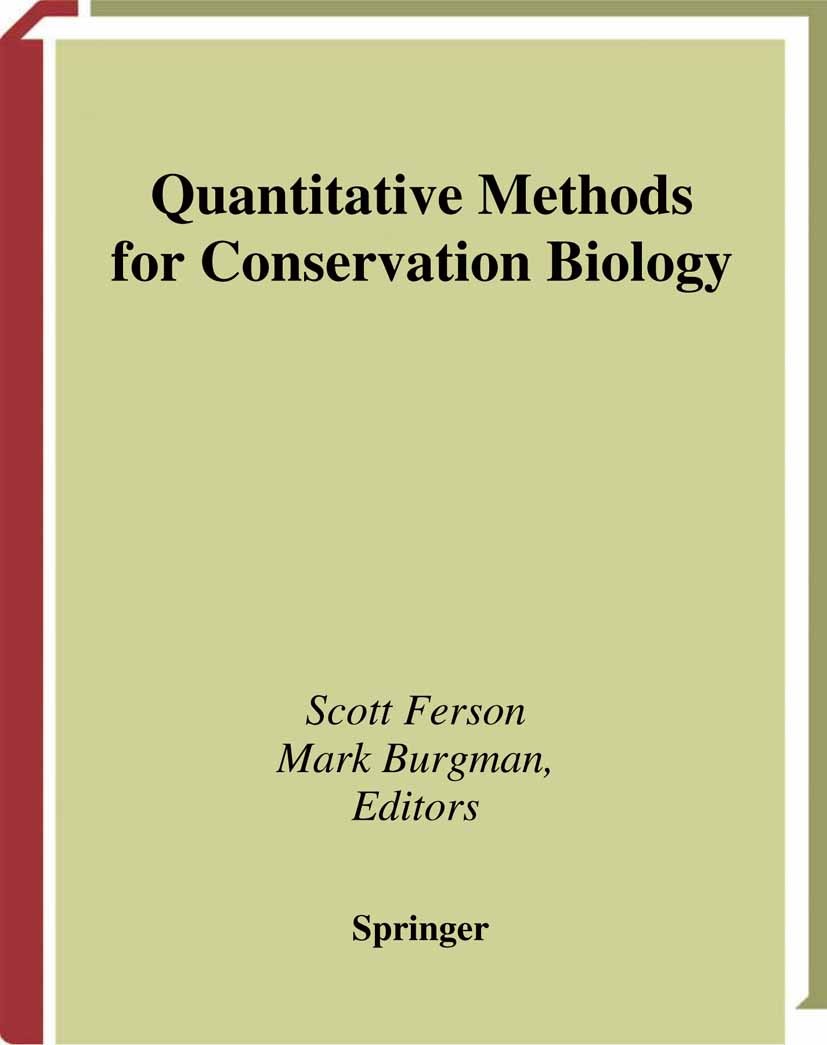| 书目名称 | Quantitative Methods for Conservation Biology |
| 编辑 | Scott Ferson,Mark Burgman |
| 视频video | http://file.papertrans.cn/781/780899/780899.mp4 |
| 图书封面 |  |
| 描述 | Quantitative methods are needed in conservation biology more than ever as an increasing number of threatened species find their way onto international and national “red lists. ” Objective evaluation of population decline and extinction probability are required for sound decision making. Yet, as our colleague Selina Heppell points out, population viability analysis and other forms of formal risk assessment are underused in policy formation because of data uncertainty and a lack of standardized methodologies and unambiguous criteria (i. e. , “rules of thumb”). Models used in conservation biology range from those that are purely heuristic to some that are highly predictive. Model selection should be dependent on the questions being asked and the data that are available. We need to develop a toolbox of quantitative methods that can help scientists and managers with a wide range of systems and that are subject to varying levels of data uncertainty and environmental variability. The methods outlined in the following chapters represent many of the tools needed to fill that toolbox. When used in conjunction with adaptive management, they should provide information for improved monitoring, |
| 出版日期 | Book 2000 |
| 关键词 | biodiversity; biology; conservation biology; ecology; environment; natural resources; population dynamics; |
| 版次 | 1 |
| doi | https://doi.org/10.1007/b97704 |
| isbn_softcover | 978-0-387-95486-8 |
| isbn_ebook | 978-0-387-22648-4 |
| copyright | Springer Science+Business Media New York 2000 |
 |Archiver|手机版|小黑屋|
派博传思国际
( 京公网安备110108008328)
GMT+8, 2025-12-27 20:17
|Archiver|手机版|小黑屋|
派博传思国际
( 京公网安备110108008328)
GMT+8, 2025-12-27 20:17


